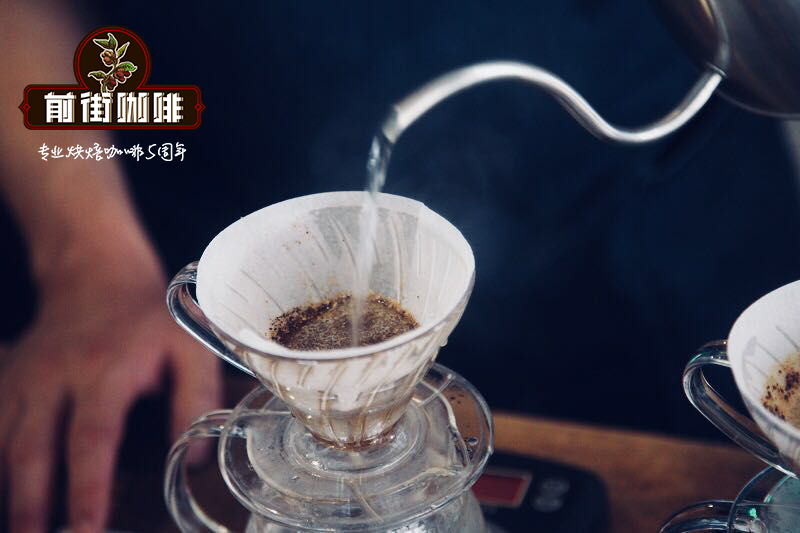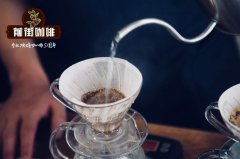How stress affects the quality of espresso
Professional coffee knowledge exchange more coffee bean information please follow the coffee workshop (Wechat official account cafe_style)

The key to making espresso lies in pressure, and the crema, quantity, and flavor of espresso all come from the influence of stress.
But why is stress so important? How does it affect concentrated formulations? Why is the nine atmospheric pressure the most commonly recommended pressure setting for brewing coffee?
Pressure is measured by atmospheric pressure, and the pressure generated by the atmosphere is usually calculated as an atmospheric pressure at sea level.
The usual nine atmospheric pressure (9 bar) when making espresso is nine times the weight of one atmospheric pressure. Stephen said: "espresso has a very long history, and nine atmospheric pressure is recognized as the most suitable pressure to extract espresso." "
In order to make it easier for you to understand and imagine the situation of tire inflation, the tire pressure of most cars is 32 PSI (about 2.2bar) and that of bicycles is 65-85 PSI (about 4.4-5.8bar).
The 9 atmospheric pressure extracted by espresso is as much as 4 times the normal tire pressure.
Imagine that such a high-pressure flow over coffee powder seems to create a mess, so we have to control and apply these nine-atmospheric pressure, which is at the heart of espresso theory.
How do we control stress? You can control the coffee brewing time by filling and pressing the coffee pressed powder.
First of all, let's take a look at the coffee pressed powder. To avoid the confusion mentioned above, we need something to stop the water from being pushed quickly over the coffee powder.
So the first thing to make sure is that the grinding degree of the coffee powder must be very fine, and any coffee can be made into espresso, but it must be extremely fine ground and filled with pressed powder in the brewing handle. This creates a high-density, flat surface that allows coffee powder to block the flow of water.
Then let's take a look at the extraction time, which is a little complicated.
Although the extraction time may vary slightly, the extraction time of a dose of concentration with nine atmospheric pressure is usually between 25 and 30 seconds. If the pressure is low, it takes more time to extract; if the pressure is high, the extraction time needs to be shortened.
But this part may be a little more complicated, because coffee takes more time to reach the appropriate extraction level, and even if you increase the extraction pressure, the concentration of a 12-second high-pressure extraction will not give you a good drinking experience.
The actual time required for extraction depends on many factors, including grinding thickness, characteristics of coffee itself, water temperature, extraction rate, brewers' habits, and so on. As mentioned earlier, there is not much room to change the grinding thickness.
This means that powder content, extraction rate and extraction time are the main variable factors of espresso formula (unless you can use a professional coffee machine that can control pressure and water temperature).
Many people also like to change the pressure of extraction: first pre-soak from low pressure, then use 9 bar of high pressure extraction, and then reduce the pressure extraction to the end. Maxwell Colonna-Dashwood advocates the use of 6 bar pressure for low pressure extraction. There are always many new directions to test for coffee, and our idea of extraction continues to evolve.
However, 9 bar pressure extraction is still the most standard setting. In fact, pressure control can only be used on advanced coffee machines with pressure adjustment.
Why not try to adjust other parameters, such as grindness and water temperature? Take light-roasted and medium-roasted coffee as an example, roasting will degrade the structure of coffee beans, making the substances of coffee beans more easily soluble in water. Light-roasted coffee can lead to low solubility because of its short baking time. Unless it is matched with the correct brewing parameters, it will lead to insufficient extraction (for example, more sour, almost sour taste). This is why many bean bakers bake a special roasting degree that is deeper than that by hand.
To sum up this part, there are many ways to adjust the concentration formula, including changing extraction time, grinding degree, water temperature, pressure and so on. However, finely ground coffee powder is usually used with 9 bar pressure extraction, and conversely, these conditions also set the extraction time of 25-30 seconds.
Of course, there are many key factors to make a good espresso: filling technique and strength, coffee baking date, coffee powder quantity, bean density, quality of machinery and equipment, size of brewing handle filter cup, water quality, hardness, current room temperature, and so on, but these are not the topics to be discussed in this article.
Important Notice :
前街咖啡 FrontStreet Coffee has moved to new addredd:
FrontStreet Coffee Address: 315,Donghua East Road,GuangZhou
Tel:020 38364473
- Prev

Indonesia PWN Gold Mantenin Coffee Bean how to flush Mantenin hand flushing scheme Powder water specific grinding degree water temperature parameters
Professional coffee knowledge exchange more coffee bean information please follow the coffee workshop (Wechat official account cafe_style) Indonesia is the world's largest archipelago country, as early as the 18th century Dutch rule introduced Arabica tree coffee cultivation, the main producing areas are in Sumatra, Java and Sulawesi
- Next

How stress affects the quality of espresso
Professional coffee knowledge exchange more coffee bean information Please pay attention to the coffee workshop (Wechat official account cafe_style) the key to making espresso lies in stress, while the crema, quantity, and flavor of espresso all come from the influence of stress. But why is stress so important? How does it affect concentrated formulations? Why is the nine atmospheric pressure the most commonly recommended pressure setting for brewing coffee?
Related
- What brand of black coffee is the most authentic and delicious? what are the characteristics of the flavor of the authentic Rose Summer Black Coffee?
- Introduction to the principle and characteristics of the correct use of mocha pot A detailed course of mocha pot brewing coffee is described in five steps.
- Which is better, decaf or regular coffee? how is decaf made?
- How much is a bag of four cat coffee?
- How about four Cat Coffee or Nestle Coffee? why is it a cheap scam?
- Which is better, Yunnan four Cats Coffee or Nestle Coffee? How about cat coffee? is it a fake scam? why is it so cheap?
- How about Cat Coffee? what grade is a hoax? which instant coffee tastes better, four Cat Coffee, Nestle Coffee or G7 coffee?
- Process flow chart of coffee making-Starbucks coffee making process what coffee tastes good at Starbucks
- The top ten best coffee beans in the world Rose summer coffee or Tanzanian coffee tastes good
- Yunnan four cat coffee is good to drink?_four cat coffee is a big brand? four cat blue mountain coffee is fake?

